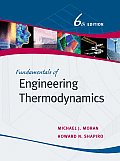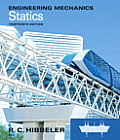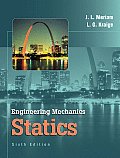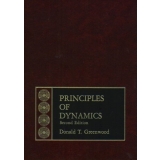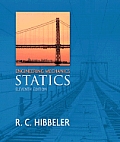Solutions Manual to accompany Engineering Mechanics Dynamics 6th edition 9780471739319
$35.00 Original price was: $35.00.$26.50Current price is: $26.50.
Solutions Manual to accompany Engineering Mechanics Dynamics 6th edition 9780471739319
Solutions Manual to accompany Engineering Mechanics Dynamics 6th edition 9780471739319
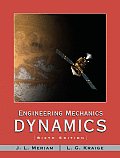
Product details:
- ISBN-10 : 0471739316
- ISBN-13 : 978-0471739319
- Author: Glenn Kraige
Known for its accuracy, clarity, and applications, Meriam & Kraige’s Engineering Mechanics: Dynamics has provided a solid foundation of mechanics principles for more than 50 years. Now in its new Sixth Edition, the text continues to help students develop their problem-solving skills with an extensive variety of highly interesting problems related to engineering design. In the new edition, more than 40% of the homework problems are new. There are also new sample problem and more photographs that link theory to application. To help students build necessary visualization and problem-solving skills, the text strongly emphasizes drawing free-body diagrams–the most important skill needed to solve mechanics problems.
Table contents:
PART I. DYNAMICS OF PARTICLES.
CHAPTER 1. INTRODUCTION TO DYNAMICS.
1/1 History and Modern Applications.
History of Dynamics.
Applications of Dynamics.
1/2 Basic Concepts.
1/3 Newton’s Laws.
1/4 Units.
1/5 Gravitation.
Effect of Altitude.
Effect of a Rotating Earth.
Standard Value of g.
Apparent Weight.
1/6 Dimensions.
1/7 Solving Problems in Dynamics.
Approximation in Mathematical Models.
Method of Attack.
Application of Basic Principles.
Numerical versus Symbolic Solutions.
Solution Methods.
1/8 Chapter Review.
CHAPTER 2. KINEMATICS OF PARTICLES.
2/1 Introduction.
Particle Motion.
Choice of Coordinates.
2/2 Rectilinear Motion.
Velocity and Acceleration.
Graphical Interpretations.
Analytical Integration.
2/3 Plane Curvilinear Motion.
Velocity.
Acceleration.
Visualization of Motion.
2/4 Rectangular Coordinates (x–y).
Vector Representation.
Projectile Motion.
2/5 Normal and Tangential Coordinates (n–t).
Velocity and Acceleration.
Geometric Interpretation.
Circular Motion.
2/6 Polar Coordinates (r-).
Time Derivatives of the Unit Vectors.
Velocity.
Acceleration.
Geometric Interpretation.
Circular Motion.
2/7 Space Curvilinear Motion.
Rectangular Coordinates (x–y–z).
Cylindrical Coordinates (r—z).
Spherical Coordinates (R–).
2/8 Relative Motion (Translating Axes).
Choice of Coordinate System.
Vector Representation.
Additional Considerations.
2/9 Constrained Motion of Connected Particles.
One Degree of Freedom.
Two Degrees of Freedom.
2/10 Chapter Review.
CHAPTER 3. KINETICS OF PARTICLES.
3/1 Introduction.
SECTION A. FORCE, MASS, AND ACCELERATION.
3/2 Newton’s Second Law.
Inertial System.
Systems of Units.
Force and Mass Units.
3/3 Equation of Motion and Solution of Problems.
Two Types of Dynamics Problems.
Constrained and Unconstrained Motion.
Free-Body Diagram.
3/4 Rectilinear Motion.
3/5 Curvilinear Motion.
SECTION B. WORK AND ENERGY.
3/6 Work and Kinetic Energy.
Definition of Work.
Units of Work.
Calculation of Work.
Examples of Work.
Work and Curvilinear Motion.
Principle of Work and Kinetic Energy.
Advantages of the Work-Energy Method.
Power.
Efficiency.
3/7 Potential Energy.
Gravitational Potential Energy.
Elastic Potential Energy.
Work-Energy Equation.
Conservative Force Fields.
SECTION C. IMPULSE AND MOMENTUM.
3/8 Introduction.
3/9 Linear Impulse and Linear Momentum.
The Linear Impulse-Momentum Principle.
Conservation of Linear Momentum.
3/10 Angular Impulse and Angular Momentum.
Rate of Change of Angular Momentum.
The Angular Impulse-Momentum Principle.
Plane-Motion Applications.
Conservation of Angular Momentum.
SECTION D. SPECIAL APPLICATIONS.
3/11 Introduction.
3/12 Impact.
Direct Central Impact.
Coefficient of Restitution.
Energy Loss During Impact.
Oblique Central Impact.
3/13 Central-Force Motion.
Motion of a Single Body.
Conic Sections.
Energy Analysis.
Summary of Assumptions.
Perturbed Two-Body Problem.
Restricted Two-Body Problem.
3/14 Relative Motion.
Relative-Motion Equation.
D’Alembert’s Principle.
Constant-Velocity, Nonrotating Systems.
3/15 Chapter Review.
CHAPTER 4. KINETICS OF SYSTEMS OF PARTICLES.
4/1 Introduction.
4/2 Generalized Newton’s Second Law.
4/3 Work-Energy.
Work-Energy Relation.
Kinetic Energy Expression.
4/4 Impulse-Momentum.
Linear Momentum.
Angular Momentum.
4/5 Conservation of Energy and Momentum.
Conservation of Energy.
Conservation of Momentum.
4/6 Steady Mass Flow.
Analysis of Flow Through a Rigid Container.
Incremental Analysis.
Angular Momentum in Steady-Flow Systems.
4/7 Variable Mass.
Equation of Motion.
Alternative Approach.
Application to Rocket Propulsion.
4/8 Chapter Review.
PART II. DYNAMICS OF RIGID BODIES.
CHAPTER 5. PLANE KINEMATICS OF RIGID BODIES.
5/1 Introduction.
Rigid-Body Assumption.
Plane Motion.
5/2 Rotation.
Angular-Motion Relations.
Rotation about a Fixed Axis.
5/3 Absolute Motion.
5/4 Relative Velocity.
Relative Velocity Due to Rotation.
Interpretation of the Relative-Velocity Equation.
Solution of the Relative-Velocity Equation.
5/5 Instantaneous Center of Zero Velocity.
Locating the Instantaneous Center.
Motion of the Instantaneous Center.
5/6 Relative Acceleration.
Relative Acceleration Due to Rotation.
Interpretation of the Relative-Acceleration Equation.
Solution of the Relative-Acceleration Equation.
5/7 Motion Relative to Rotating Axes.
Time Derivatives of Unit Vectors.
Relative Velocity.
Transformation of a Time Derivative.
Relative Acceleration.
Coriolis Acceleration.
Rotating versus Nonrotating Systems.
5/8 Chapter Review.
CHAPTER 6. PLANE KINETICS OF RIGID BODIES.
6/1 Introduction.
Background for the Study of Kinetics.
Organization of the Chapter.
SECTION A. FORCE, MASS, AND ACCELERATION.
6/2 General Equations of Motion.
Plane-Motion Equations.
Alternative Derivation.
Alternative Moment Equations.
Unconstrained and Constrained Motion.
Systems of Interconnected Bodies.
Analysis Procedure.
6/3 Translation.
6/4 Fixed-Axis Rotation.
6/5 General Plane Motion.
Solving Plane-Motion Problems.
SECTION B. WORK AND ENERGY.
6/6 Work-Energy Relations.
Work of Forces and Couples.
Kinetic Energy.
Potential Energy and the Work-Energy Equation.
Power.
6/7 Acceleration from Work-Energy; Virtual Work.
Work-Energy Equation for Differential Motions.
Virtual Work.
SECTION C. IMPULSE AND MOMENTUM.
6/8 Impulse-Momentum Equations.
Linear Momentum.
Angular Momentum.
Interconnected Rigid Bodies.
Conservation of Momentum.
Impact of Rigid Bodies.
6/9 Chapter Review.
CHAPTER 7. INTRODUCTION TO THREE-DIMENSIONAL DYNAMICS OF RIGID BODIES.
7/1 Introduction.
SECTION A. KINEMATICS.
7/2 Translation.
7/3 Fixed-Axis Rotation.
7/4 Parallel-Plane Motion.
7/5 Rotation about a Fixed Point.
Rotation and Proper Vectors.
Instantaneous Axis of Rotation.
Body and Space Cones.
Angular Acceleration.
7/6 General Motion.
Translating Reference Axes.
Rotating Reference Axes.
SECTION B. KINETICS.
7/7 Angular Momentum.
Moments and Products of Inertia.
Principal Axes.
Transfer Principle for Angular Momentum.
7/8 Kinetic Energy.
7/9 Momentum and Energy Equations of Motion.
Momentum Equations.
Energy Equations.
7/10 Parallel-Plane Motion.
7/11 Gyroscopic Motion: Steady Precession.
Simplified Approach.
More Detailed Analysis.
Steady-State Precession.
Steady Precession with Zero Moment.
7/12 Chapter Review.
CHAPTER 8. VIBRATION AND TIME RESPONSE.
8/1 Introduction.
8/2 Free Vibration of Particles.
Equation of Motion for Undamped Free Vibration.
Solution for Undamped Free Vibration.
Graphical Representation of Motion.
Equilibrium Position as Reference.
Equation of Motion for Damped Free Vibration.
Solution for Damped Free Vibration.
Categories of Damped Motion.
Determination of Damping by Experiment.
8/3 Forced Vibration of Particles.
Harmonic Excitation.
Base Excitation.
Undamped Forced Vibration.
Damped Forced Vibration.
Magnification Factor and Phase Angle.
Applications.
Electric Circuit Analogy.
8/4 Vibration of Rigid Bodies.
Rotational Vibration of a Bar.
Rotational Counterparts of Translational Vibration.
8/5 Energy Methods.
Determining the Equation of Motion.
Determining the Frequency of Vibration.
8/6 Chapter Review.
APPENDICES.
APPENDIX A . AREA MOMENTS OF INERTIA.
APPENDIX B . MASS MOMENTS OF INERTIA.
B/1 Mass Moments of Inertia about an Axis.
Radius of Gyration.
Transfer of Axes.
Composite Bodies.
B/2 Products of Inertia.
Principal Axes of Inertia.
APPENDIX C . SELECTED TOPICS OF MATHEMATICS.
C/1 Introduction.
C/2 Plane Geometry.
C/3 Solid Geometry.
C/4 Algebra.
C/5 Analytic Geometry.
C/6 Trigonometry.
C/7 Vector Operations.
C/8 Series.
C/9 Derivatives.
C/10 Integrals.
C/11 Newton’s Method for Solving Intractable Equations.
C/12 Selected Techniques for Numerical Integration.
APPENDIX D. USEFUL TABLES.
Table D/1 Physical Properties.
Table D/2 Solar System Constants.
Table D/3 Properties of Plane Figures.
Table D/4 Properties of Homogeneous Solids.
INDEX.
People also search:
dynamics mechanics examples
what is dynamics in engineering mechanics
engineering mechanics dynamics answers
engineering dynamics examples
|
engineering mechanics dynamics by hibbeler
|
dynamics engineering mechanics
mechanical engineering dynamics and control
You may also like…
Solution Manual
Solution manual for Engineering Mechanics: Dynamics Costanzo Plesha Gray 2nd edition
Solution Manual
Solutions Manual to accompany Fundamentals of Engineering Thermodynamics 6th edition 9780471787358
Solution Manual
Solutions Manual to accompany Engineering Mechanics: Statics 13th Hibbler 0133009548
Solution Manual
Solutions Manual to accompany Engineering Mechanics – statics 6th edition 9780471739326
Solution Manual
Solutions Manual to accompany Engineering Mechanics: Statics 11st edition 9780132215008






